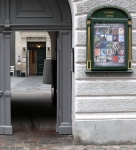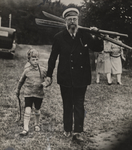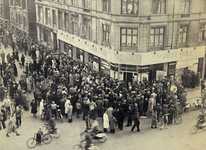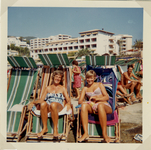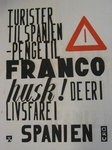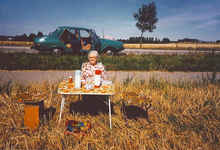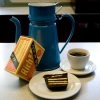| Exhibition: HOLIDAYS at long last! |
|
The exhibition is available from 22 June – 31 December, 2013. Holiday, holiday, holiday. Sun and summer. Travel and adventure. The spirit of community, freedom and long days at the beach. This is what most people think of when they hear the word holiday. Being on holiday is something that every Dane holds very dear. However, being on holiday has not always played the part that it does today. One hundred years ago, many Danes were never able to go on holiday. Sundays and some public holidays were the only breaks from the long workdays. That changed in 1938 when the first Holidays with Pay Act was enacted after pressure from both the national and international labour movement. This year, it is the 75th anniversary of the Holidays with Pay Act; and on this occasion, we are opening up a large special exhibition in June where we will focus on the history of the holiday. The dream of freedom Already in 1919 (soon after the labour movement's great victory in implementing the eight hour work day), at the annual general meeting of the Danish Federation of Trade Unions, it was agreed that demands were to be made regarding having holiday with pay implemented in the collective agreements. However, the employers vehemently rejected to meet these demands. They referred to the international competitive situation and viewed holiday with pay as a demand for pay increase. The attitude was that is was the responsibility of the labour organisation to ensure that their members were given opportunities for recreation. Meanwhile, in several local collective agreements, holiday had been negotiated, and in 1919 approximately 20 % of the organised workers in Denmark took a holiday. The following years, a steady professional pressure meant that more and more collective agreements included holiday with pay. I 1934, 47 % of the organised workers took a holiday. For most of the workers, this meant that they could go on holiday for six days per year. That is one week's holiday. Thus, the professional struggle far preceded the political process which was only really kick-started after a series of international conventions in the mid 1930s (especially the International Labour Convention in Geneva in 1936 had an impact on the Danish holiday legislation). This coincided with the social democratic/social-liberal government that - after a dramatic Landsting election in 1936 - also got the majority in this decisive body; the way was then paved for the Holidays with Pay Act. Workers' travel The result of this meeting was the creation of a holiday committee which suggested establishing the Danish People's Holiday Association. This organisation would play a major part in Danish pay earners' holidays, among others by establishing a number of holiday villages from 1939 an onwards. In the exhibition, a special section will be dedicated to the history about the Danish People's Holiday Association. About the exhibition In the exhibition, you will be able to see some of the types of holidays that have been typical for Danish workers through the years. Through recollections, films and photos, we are telling the story about the development from the community around camping and cycling holidays in the 1920s and 30s, to the dream of the southern sun in the 1960s and the joy of being "master in one's own house" in the allotment gardens and the summer house areas that were developed through the 20th century. We will focus on the social history of the holiday. You will be able to step into the suitcase and go to the Copenhagen Central Station where the disadvantaged children that are to spend their holiday on farms are about to depart. You will be able to hear Winnie's story about how her mother had to work three jobs to be able to afford the yearly dream holiday to Mallorca. The primary target group of the exhibition is families with children and there will be plenty of activities to take part in. Enter the old tent, get comfortable on the hay mattress and imagine how camping was before the convenience of the caravan was common. Step into the suitcase and imagine how you would feel if you were to go on a four week holiday on a farm without your parents. Enter the caravan and let us know what holiday means to you. Today, the dreams and struggles that led to the Holidays with Pay Act of 1938 are able to put our views on holiday in perspective; this in a time when there is a political focus on the workload and a desire for us to work more; and in a time where technology is further limiting our chances of getting away from work and the weekday and surrender ourselves to adventure. |




